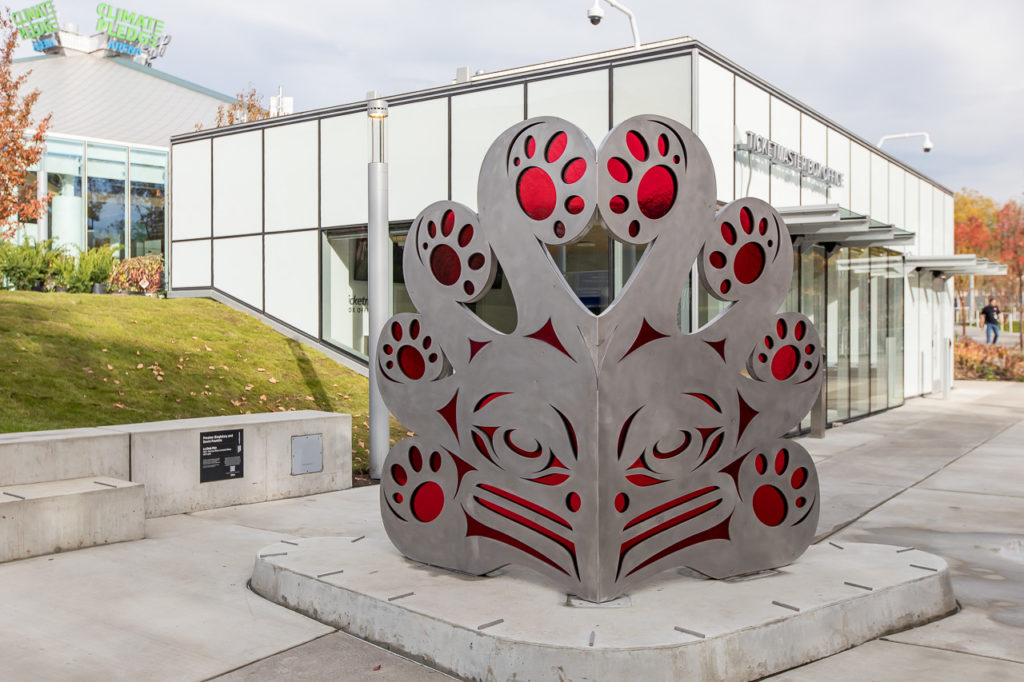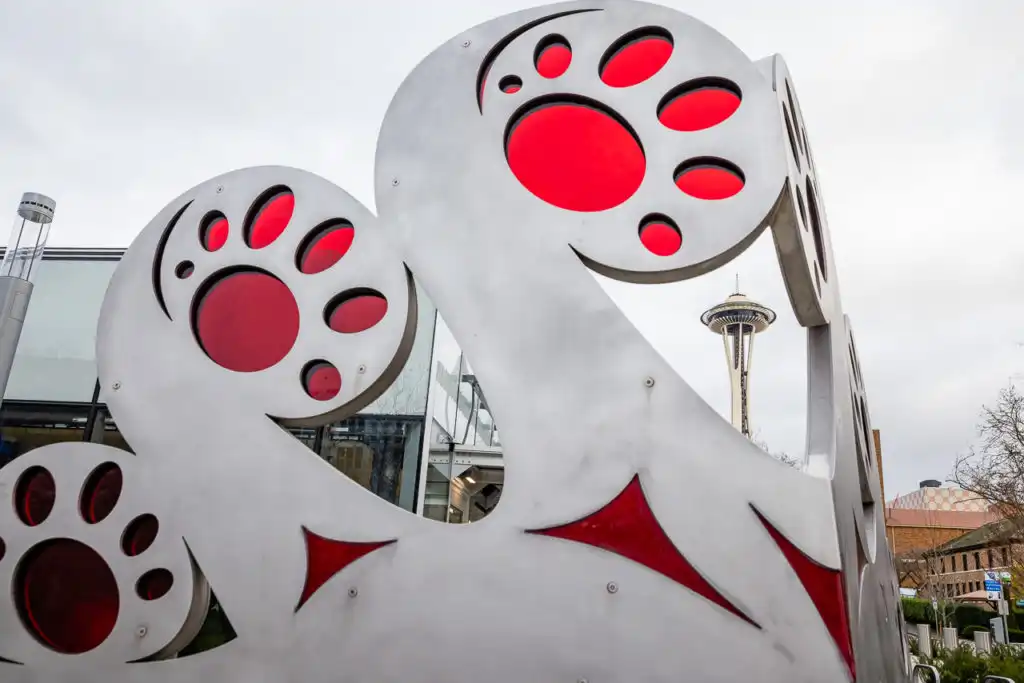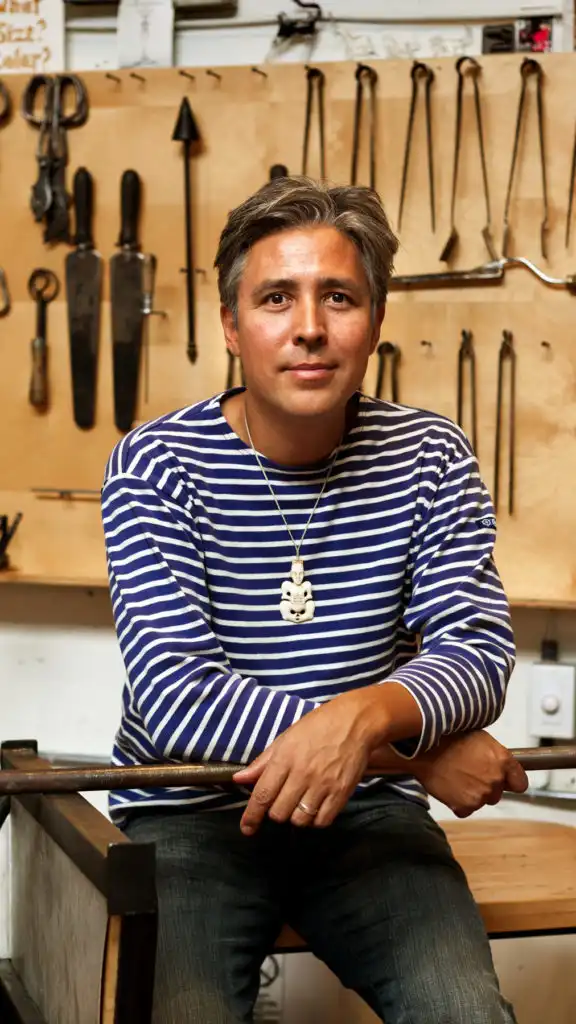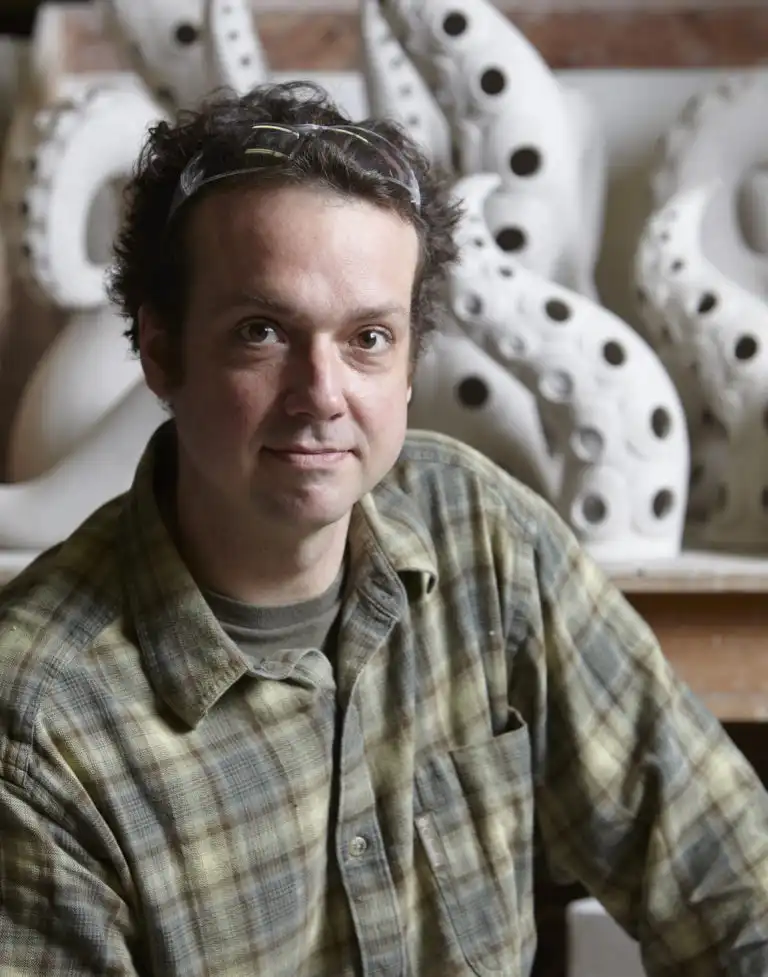


Preston Singletary (born 1963 in San Francisco, California, U.S.) is a Native American glass artist. Preston Singletary grew up in the Seattle area listening to stories told by his great-grandparents, who were both full Tlingit. In high school he met and became friends with future glass artist Dante Marioni, son of glass artist Paul Marioni. Shortly after graduating high school, Singletary (who was actively pursuing a career as a musician at the time) was asked by Dante Marioni to work as a night watchman at what was then the Glass Eye, a Seattle glass-blowing studio. Singletary quickly moved from being night watchman to working the day shift to eventually joining one of the studio’s production teams. In 1984, Singletary took part in a workshop at Pilchuck Glass School for the first time. He has since been involved in Pilchuck as a teacher, student, and more recently as a member of its Board of Trustees. Singletary has blown glass around the world in countries such as Sweden, Italy, and Finland. In the late 1980s, Singletary began incorporating traditional Tlingit themes into his work and reaching out to other Northwest Coast Native American artists. Singletary maintains an active schedule by teaching, lecturing and exhibiting internationally. Preston also fronts a rock band based in Seattle.
The art of Preston Singletary has become synonymous with the relationship between European glass blowing traditions and Northwest Native art. His artworks feature themes of transformation, animal spirits and shamanism through elegant blown glass forms and mystical sand carved Tlingit designs.
Over time, my skill with the material of glass and traditional form line design has strengthened and evolved, allowing me to explore more fully my own relationship to both my culture and chosen medium. This evolution, and subsequent commercial success, has positioned me as an influence on contemporary indigenous art. My work with glass transforms the notion that Native artists are only best when traditional materials are used. It has helped advocate on the behalf of all indigenous people—affirming that we are still here—that that we are declaring who we are through our art in connection to
our culture.
I design sculptures to seek the very essence, the simplicity of a concentrated energy. My ideas speak the language of shape. Three dimensional art engages us, as nature does, on a fundamental level. There is a place in us that is touched by the power of forms. I want my works to uplift the spirit as a graceful gesture, to inspire feelings of happiness and timelessness. As a (Sansei) Japanese American, my designs are a confluence of the cultures and traditions of the Pacific Rim. Growing up with a heritage of Japanese design and in the Pacific Northwest’s beautiful natural environment has instilled a humanistic spirit to my sculptures. I may be inspired by a Tongan war club or the folds of origami paper. These elements and feelings are subliminally integrated into my art.
I began in 1971 working as an apprentice learning to fabricate large bronze fountains and sculptures. My early career included explorations of abstract expressionism, with its freedom of design and a tempered sense of balance. My first public art commission was in 1978, a dragon for the International District Children’s Park. In 1999 I created the iconic “MITT” sculpture blending both whimsy and baseball history for the Seattle Mariners Stadium. These sculptures are approachable and interactive, a theme that has become a basis for many of my public sculpture designs. My 48 years of studying and creating art have taught me to believe in myself. My knowledge has come from the wealth of experiences and challenges of each new project. Throughout my career, I’ve taken the chance to make even the littlest idea work into a new sculpture.

David Franklin collaborates with Preston Singletary on his public art commissions.
I started creating public art in my teens as a member of a graffiti crew, cutting stencils and painting them in abandoned rail yards near downtown Denver, CO. It was an inauspicious beginning, but the overall experience made me acutely aware of my deep-seated desire to connect with humanity and have a chance to do large-scale installations. In the early nineties I moved to the Northwest for a fresh start and began seeking people to help me realize my goal. Enter Duane Pasco, a successful regional artist known for being a part of the revival of Northwest Coast Native Art and creating monumental freestanding and integrated sculptures. I spent nearly a decade as his apprentice, gaining not only the graphic and sculptural skills I needed to propel my own art forward, but first-hand experience with large-scale art production—everything from concept and design to fabrication and installation.
Today, by integrating my roots in graffiti with my training in native sculpture and graphics, I seek to create an instant connection between the viewer and my art. I want people to “get” my art the way we all “get” petroglyphs—on an innate level, independent of history or heritage.
Do you want to know when tickets drop?
Sign up for our mailing list and stay in the loop.
Site by usheru
Do you want to know when tickets drop?
Sign up for our mailing list and stay in the loop.